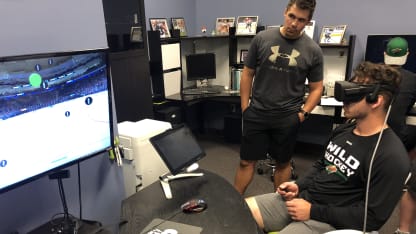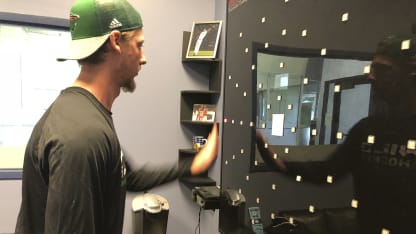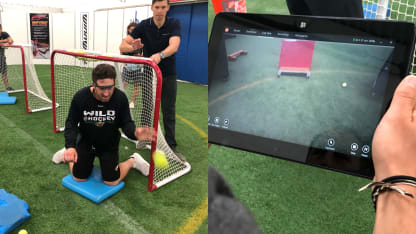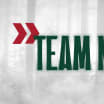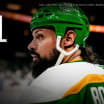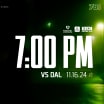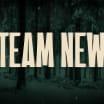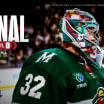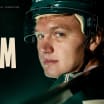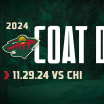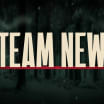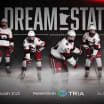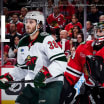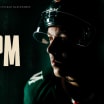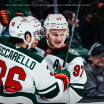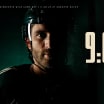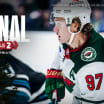"We do all this stuff to work with our bodies, whether it's yoga, pilates or lifting weights," Tucker said. "But the eyes, a lot of their functions are controlled by muscles. And if you work on those, it's no different than the rest of the body."
While vision training has been around for many years -- Wild goaltending development coach Frederic Chabot says he remembers the very beginnings of it from his playing days in Quebec in the 1980s -- the goalies at the Wild's development camp said they hadn't been introduced to anything like it yet in their careers.
After after a few hours at the First Athlete Facility, each said it's something they'd like to work into their training regiment.
"Unique is definitely the word, especially when it comes to our position," Robson said. "Being goalies, you don't really get a lot of goalie-specific drills; more so on emphasis on the legs in the weight room. But to get [tennis balls] bouncing in from behind you, using your peripherals, a ball coming upwards instead of the typical coming down off a wall, it's definitely beneficial for us."
When the Wild's camp goaltenders visited, they spent a couple of hours in an office with Tucker, learning about the program then going through a battery of baseline testing, including work on a virtual reality trainer that simulated seeing pucks inside Madison Square Garden.
After the dodgeball break, they hit the turf, starting with a juggling warmup before moving on to work with tennis balls and a net.
Wild goaltender Kaapo Kahkonen couldn't juggle at the start, but learned quickly thanks to a few vision tips from Tucker. Within 15 minutes, he was holding his own.
Inside the "crease," things quickly got competitive. With a goalie on his knees in front of the goal, Tucker set up three large boards, each angled at about 40 degrees from vertical. One was set up straight on, one was to the left and another to the right.
He then stood behind the goal, throwing a tennis ball off one of the three boards. Goalies were tasked with using their peripheral vision to track the ball into their body to make a "save."
